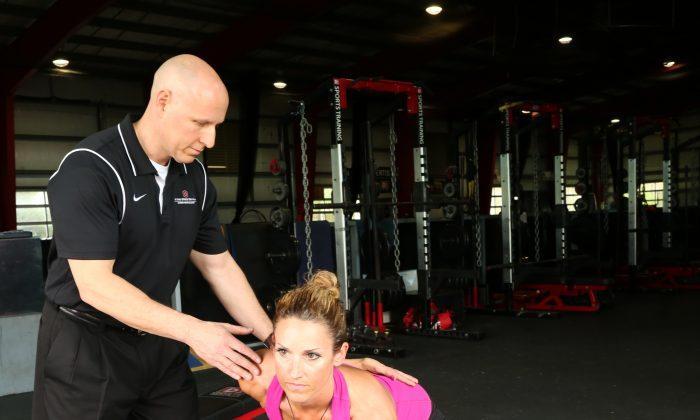America’s butt obsession has reached a fever pitch in recent years. However, we often ignore the most fundamental aspect of this anatomy: structure and support.
If we fail to acknowledge our body’s architecture, life can get difficult.
Chris Kolba, Ph.D., a physical therapist at The Ohio State University Wexner Medical Center, has witnessed a pattern for years in patients who suffer from chronic back, hip, or knee pain. He says many of these cases stem from a condition he calls dormant butt syndrome (DBS).
“It’s not a true medical diagnosis. It’s just a catchy term,” Kolba said. “Patients get a little chuckle out of it, but it makes sense and the point hits home.”
In DBS, the gluteus muscles can become weak and tight, forcing nearby muscles to do a job they weren’t designed to handle.

“The glute is one piece of the big puzzle, and when one muscle is tight the opposite muscle is going to get inhibited and not work as efficiently as it should,” Kolba said. “The glute muscle is a big shock absorber, a big force-generator and motion-controller, so other muscles around the area in the back or around the knees start to compensate, and over time, can break down and develop pains and sprains and other issues we see in the clinic.”
From Couch Potatoes to Athletes
DBS impacts millions of Americans, and chronically tight hip flexors are one of the most common problems physical therapists see. The condition affects people at both ends of the activity spectrum, from couch potatoes to athletes.
DBS is common in sedentary individuals because hip flexors get short and tight when the legs remain bent for a long period of time. For this reason, sleeping in the fetal position also contributes to DBS.
“When you fall asleep in the fetal position, your hips flex, so your knee is up near your chest, which puts that hip flexor on the front of your hip in a shortened position,” Kolba said. “It’s just a piece of the puzzle that adds to that hip flexor being tight. It’s the tight hip flexor that really drives that weakness in the glute.”
DBS can affect very active people who do a lot of running but neglect to do proper stretching and cross training. When their glutes aren’t working properly, it impacts other muscles in the core, as well as hamstrings and quadriceps, increasing wear and tear.
Kolba is currently working with a runner who suffered a severe tear in her meniscus—a small but essential piece of cartilage that stabilizes and cushions the knee joint. The injury occurred when she was training for a half marathon. Surgery repaired the tear, but Kolba traced the root of the problem to DBS and prescribed hip-flexor stretches and glute-activating (contraction) exercises to prevent future injury.
Returning to Normal Glute Function
Because hip flexors are stabilizing muscles found deep in the body, it can be difficult at first to isolate them. But a physical therapist can show you how and give you some specific stretching and activating exercises that can best address your particular condition.
Kolba says these exercises are necessary to get the patient back to normal glute function, but he adds that even exercises with a more aesthetic purpose can address DBS issues.
“Any exercise that works to activate the glute is good. Weight-bearing exercises, squats, lunges, step-ups, in addition to what you call the butt-sculpting exercises. They can not only make it look good, but make it function good.”
At the very least, Kolba recommends that people make an effort to stand frequently and walk around throughout the day to help keep DBS at bay.
DBS recovery depends on the extent of the muscle compensation and the will of the patient. Kolba says that recovery is usually quicker and easier for an athlete—they just add a few more moves to their routine. But for sedentary people, there is typically more of a struggle.
“If their muscles have been dormant, and they have been inactive for a long time, it’s probably going to take a little longer for them to get some flexibility in their hip flexors and get those glutes turned on. Then it’s a matter of trying to get them to continuing beyond therapy to keep things activated,” Kolba said.
“Once they start feeling better after a couple of sessions of therapy, they may just go back to their sedentary lifestyle, and they may not keep up with the exercises. Once they leave us, it’s hard to tell. We may not see them until their issue flares up again.”






